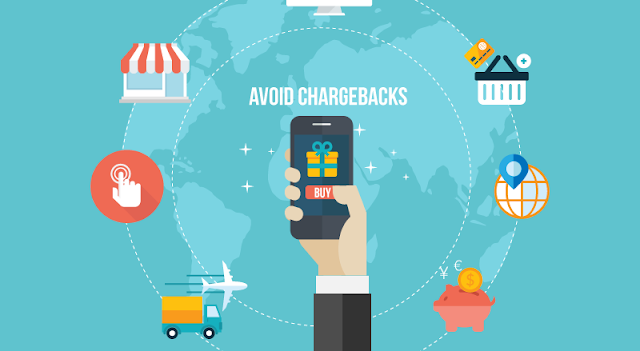Impact Of Chargeback Management System – The Benefits That It Brings
The truth is that running a business requires quite a lot of considerations to be implemented and thoroughly accounted for. With this in mind, chargeback prevention is without a doubt something that needs to be taken into the most serious consideration. With this in mind, the first thing that needs to be clarified is what a chargeback actually is. This is the process in which the customers retrieve funds from the merchant as a result of a disputed credit card transaction. This process is almost always going to be initiated by the cardholder themselves as well as the corresponding bank of issue.
The Chargeback System and its Benefits
There are quite a lot of powerful benefits which stem from using a prominent chargeback management system. Let’s go ahead and take a look.
- Prominent management– The chargeback system is going to simplify your workflow tremendously, and you are going to be spending a lot less time and money on annoying chargeback procedures. This will open up more time for you to look after your own business.
- Dynamic real-time updates – the chargeback management system is going to provide you with the opportunity to integrate dynamic and real-time updates. The system includes built-in processors for payments as well as card provider updates. It is going to improve the overall performance and your success rate.
- Precise analysis – you can take a look at the specific reason for the chargeback and undertake the necessary preventions to ensure that it never happens again.
- Secure Environment – protection should always be a number one priority for your enterprise. With a comprehensive chargeback system, you can rely on tools which are going to manage the chargeback and reduce it to its minimum.
Other Considerations to be Aware of
The chargeback system is also going to enable you to draw the proper conclusions and reach the necessary solutions. This is paramount for the proper conduct of your enterprise and the optimization of the processes within it. With this in mind, you are expected to drive a lot of advantages from it that every contemporary merchant should be focusing on. Not having a system of the kind means that you would have to physically visit and audit a wide range of different websites and the businesses they conduct to handle the issue. A chargeback system, on the other hand, is going to provide you with everything that you need in order to comprehensively handle everything that’s necessary. It’s quick, it’s convenient and most of all – it’s truly effective. Not only are you going to spare resources, but you will also increase customer satisfaction and reduce chargebacks.
The Chargeback System and its Process
The entire process revolving around chargeback is rather complicated, and it’s filled with particularly sensitive deadlines as well as legal procedures, documentation and a lot of additional requirements. It’s important to take a look at some of the most common reasons for which a chargeback process is going to be initiated on behalf of the customer. This is not only going to help the chargeback management draw the proper conclusions, but it’s also going to allow it to come up with proper and actionable chargeback prevention strategies. With this in mind, the most common issues are:
- The customer isn’t satisfied with the service or the product which have been delivered
- The items which were paid for weren’t delivered to the cardholder
- The transaction itself was not authorized
- The consumer attempts to engage in a friendly fraud
- An error in the billing process took place (for instance, the card was billed two times)
As you can see, the reasons are numerous but it goes without saying that unsatisfied customers are the most common initiators of chargeback processes. From this point forward, if the issuer is convinced that the cardholder has the necessary merit to initiate the dispute, he’s going to notify the actual acquirer of the transaction reversal who is going to notify the merchant. What is more, there is going to be a fee charged for the administrative trouble and efforts.
Things to Consider
The chargeback system is a necessity as it provides the customers with a lot of safety and security. Failing to implement a proper chargeback management system, however, is going to lead to increased losses and decreased revenues for the merchant himself. This is something that has to be taken into thorough account. There are plenty of different policies that could be implemented
The Emerging Facts of Online Payment Fraud Trends
World of payment is advancing technologically, it has increased possibilities for cardholders and merchants to connect globally. Cardholders can make payments while using mobile devices, and enjoy multiple payment methods at a time. Technological advancement has made easy to detect and protect data with the help of tools and strict policies.
Online frauds have cost billions of dollars to companies, cutting their earning dramatically. Online and offline frauds are increasing rapidly, with each retailers losing at least $3 for every fraud they incur in the year 2014. This was $2.79 in 2013, especially mobile frauds which are driving these costs higher each year.
How E-commerce Mitigate Fraud?
It is a challenging task to entirely eliminate frauds, but necessary steps can be taken to ensure the network is secure. Security protocols, antiviruses, and firewalls can help protect against hacking attempts.Updating software problems ensure sensitive data of business is safe. There are many ways to protect the business, here are some of them:
- Increase awareness of fraud trends
- Partner with payment processors who are verified
- Using encrypt transactions for confidential information
- Ensure Login and tokens are changed on regular basis
- Policies for accessing confidential data
- Security checks using antivirus programs
- Customers to log into accounts before making purchase
- Payment frauds can not only hurt merchants but customers as well. Aggressively protection against frauds can improve the bottom line and the reputation.
How to prevent friendly Frauds
- Saving IP Address: If you keep a record of IP addresses, it will help a lot. It is usually on merchant receipt and can be used to challenge chargebacks as supporting evidence. For example, a person belongs to the certain town, and the IP address also belongs to the same town, then suspicion can be back on card owner.
- CVC Data Collect: You can request security code during the checking process. These are three digits at the back of MasterCard, Visa, and four digits on American Express cards.
- Signature for the goods: If you don’t know the customer, then it is better not to leave deliveries at the door of your customer. A signature is important, it can help prevent claims that state goods not arrived.
- Keep communication records: keep records of communication because these can be used as an evidence. Live chat sessions, emails, and other communication material should keep
as a personal record to fight against chargebacks. You can claim that customer was aware of the transaction and participated.
It is a Bluff: You may face a situation where a customer demand refund stating that card was compromised. If you have doubts about the validity of this claim then be polite, but make sure to mention they should contact the bank immediately because their card has to be deactivated. Ask that to send you a message once it has been done, and provide your evidence before refunding. If you have evidence such as IP address and communication, make sure to point it out.
Some Basics For Consideration To Avoid Potential Chargebacks
There are many things to consider to ensure business longevity, and merchants need a proactive approach to deal with chargebacks. If resources are not used to avoid chargebacks, then business tagged as blacklisted, and it can lead to a loss of revenue. Here are some steps that merchants need to consider to avoid chargebacks:
- Conduct AVS check and process orders that are valid
- Obtain evidence of shipping receipts and documentation
- Consider using MasterCard’s security code or verified by visa. This will provide extra protection and solidify your position when representing.
- Require cardholders to provide CVV2, CID, and CVC2.
- Refund as soon as possible and notify the cardholder in writing once issued, or when online membership is canceled.
- Show clear descriptor, mentioning phone number so that cardholder can contact to discuss the dispute.
- Provide email address on the website so that cardholders can contact you when there is a dispute situation. State the terms and condition, policies, and information that will help the client. Make sure services are clearly described and use an email notification to send details of the sale. Indicate when the card is charged.
- Make sure to obtain written or E-signature from cardholder giving you permission to charge on monthly recurring payment. If you are offering subscriptions then make it easy to cancel without asking questions. Make these things clear in your policy.
- Authorization for deposit is important, and they must not exceed the amount that has been authorized by the cardholder. There should be positive authorization, and it is better not to use voice authorization.
- If authorization was more than 7 days old, then you should reauthorize it because cardholder may have changed mind at that time. While it can still be called as valid, but asking one more can work in your favor.
- Compare signature on card with receipt, make sure they match
- Don’t key card number, swipe whenever possible
- Never finish a transaction is denied by the customer at the last moment. You can ask for another type of payment. For orders that are through an online site, asking security code will help you. Make sure to ask three digit code that is at the back of the card. In case there is American express then the code will be 4 digits.
Your priority should be to advertise clear and mention services along with terms and policies. If you don’t give much information, it can lead to chargebacks, so mention products and their quality clearly. If you are selling something online or by mail, in this case, the customer doesn’t check the item physically. You can provide information on the side so that customer knows what he or she is purchasing. These points may look small, but they can be a handy to fight against chargebacks.
Essential Aspects of Payment Processor Can Help Avoid Chargebacks
Your payment processor can help avoid chargebacks using tools such as verified by Visa, CVV, and AVS for preventing frauds. In addition to these, there are measures they consider to reduce the number of chargebacks. Here is list of things that you can expect:
- There are many players in the overall process, the card brand, card owner, payment brand, processors, and the merchant. If a customer has a reasonable claim then card brand will send a temporary credit to the card owner and the process of chargeback starts. The funds are debited from merchant’s account during the process.
- There will be a notification via mail, fax, or online management system about the chargeback. If you submit documentation on time and challenge the chargeback successfully in time assigned to you, then funds will be returned. But if documentations are not submitted, then you won’t get funds.
These were things that you can expect from banks that will handle your case, here is how your processor can handle your case and ensure to prevent chargebacks.
Processors helping business to avoid chargebacks
- Blacklist: A list can help business owners to identify frauds, regardless of the type of fraud committed. Merchants can enlist those who have caused trouble once. Merchants also have the option to block cards that have been involved in some sort of fraud. Individual IP addresses, emails, or entire country can be banned. There aren’t many processors offering these facilities so merchants should check whether they have it.
- Whitelists: Just like a blacklist, there is a whitelist that helps manage demographic of customers. A blacklist bans few individuals, but a whitelist bans entire population, allowing only a few using a protective barrier. For example, a merchant may want to block all the countries except USA, UK, and Australia. Black and white lists help reduce risk and prevent transactions that merchant thinks will result in chargebacks. Consulting with the processor will help manage both white and black lists.
- Limits: If a criminal tries to run a card, it may go for many other purchases as well before detection. If there is one successful fraud attempt, then criminal will for sure want to try the same or different card. Having limits is essential because of its helps merchants monitor transaction frequency.For example, an IP address could be limited or prohibited from attempting to purchase for a short time. Velocity limits are type of tool usually provided by the processor to control a number of transactions.
Security Codes: Security codes can help validate card not present transactions and it will also ensure that the actual person is participating in the purchase. If a customer can provide security code on the card, then this tool will verify whether the person placing the order has a card in hand or not. It can limit criminals who just have gained access to information, but not security code. This feature is provided by the processor as a plugin to prevent unauthorized transactions.
Beneficial of Customer Support to Avoid Chargebacks
If you are engaged in e-commerce and if you accept online payments from your customers, chances are, you can experience chargeback. In case you do not know, chargeback refers to a reversal in a payment that has been previously made. This seeks to protect buyers from the unscrupulous transaction, but it can have negative impacts on your business. The good news is that there are several ways that can be promising in terms of the prevention of such occurrences. One of the most promising solutions to stop chargeback would be through having exceptional customer service, specifically through offering the support that is needed by customers.
Be Available Round-the-Clock
As a way of improving customer service, it will be good if you can be available 24/7. This means that even outside of office hours, you must be able to provide customer support. You can consider having phone lines that are available 24/7. By being able to respond quickly to the queries of your customers, it will be possible to eliminate any hesitation that can be possibly present on their end. You must be able to provide them with a channel to voice out their concerns and to be assisted in order to stop chargeback. There are instances wherein customers can make impulse purchases. After some time, they might realize that the seller can possibly be illegitimate. This is when they will request a chargeback. On the other hand, if support is immediately available, they can be provided with the clarifications that they need, and they will be less likely to request a reversal.
Provide Sufficient Descriptions
This will help to keep your customers to be fully informed, and hence, will increase the possibility of being able to stop chargeback. If you are selling a specific product, as a way of providing exceptional customer support, make sure that proper descriptions are provided. For instance, inform them about the dimensions, conditions, and other specifications. When they receive the product, this will minimize the likelihood that they will be unhappy and will prevent them from requesting a chargeback. It is important to be truthful in advertising so that customers can have clear expectations about what they will be receiving from your end.
Communicate with Customers
This is another way of improving customer service for the purpose of being able to stop chargeback. Once they have placed their orders, follow-up communication will prove to be necessary at the end of your business. Inform them about the status of their orders and delivery, especially if there are any delays. This will minimize the likelihood that they will reverse the transaction. A strong customer support team will be necessary to foster better communications with customers.
An Essential Updates to E-commerce News to Prevent Cybercrime and Chargebacks
E-commerce can utilize technology to prevent cybercrimes. Here are some features that a business can
Many businesses have to fight Cyber Crimes on a daily basis; there is no organization which is immune to Cyber Crimes. Just like any regular crime, criminals known as hackers steal your vital information and valuables when you are not paying attention. There is a rise in E-commerce and online technology, more and more companies are using the internet to do business. You probably will need a website to sell products and a merchant account as the bridge for money transfer. If security is not checked on a regular basis, you may face chargebacks or fraudulent transactions.
If you are selling products, then there may be critical financial data stored on your server. Websites help businesses to keep a record of various documents & statistics, but this data also attract cybercriminals. In simple terms, these people want to launch an attack on your website to steal data, but fortunately, there are many ways to keep hackers away from your Website. This is why e-commerce businesses have to utilize technology to prevent cybercrimes! Here is how.
Keep Data Encrypted
Data that is on company’s server and customer’s page should be encrypted to avoid phishing attack. An SSL (Secure Socket Layer) is the best option to keep customers’ personal information safe. A secure SSL on a business website indicates that website is authentic. Many corporations and search engines use SSL certificate on websites. It reduces the number of fraudulent purchases and protects card information on the website.
A Strong Password
It is the responsibility of your business to inform customers to use strong passwords. Your website can inform customers to include numbers and symbols in passwords. Long Login details are not easy to crack and criminals will find it hard to get your personal information.
Don’t store confidential information
It is risky to store too much information on the server, it can lure hackers from around the world. E-commerce should store little information about current events and then get rid of it as soon as possible. For some businesses, storing information is prohibited, especially credit card information. As per PCI security standard council, there are penalties for business owners who fail to follow guidelines.
Use Firewall Security
Viruses can destroy your business, you can install a strong firewall to stay safe. A firewall is a layer on your network that sends alerts when there is a suspicious activity on your server. To avoid getting these, merchants have to integrate firewalls on customer’s login area, search queries, and contact form.
DDoS protection service
There has been an increase in the number of DDoS attacks in the last five years. It is better to utilize technology to counter this problem, merchants can turn towards cloud-based DDoS protection to handle it. Using latest technology will eliminate the need to invest in new equipment to fight the DDoS attack.
Importance of Credit Card Company to Chargeback Prevention: Issuing Banks
Dеfinitiоn
Thе iѕѕuing bаnk iѕ thе finаnсiаl inѕtitutiоn thаt iѕѕuеѕ Credit card to соnѕumеrѕ on bеhаlf оf thе саrd networks (Viѕа, MаѕtеrCаrd). Thе iѕѕuing bаnk is аlѕо knоwn as thе Credit card company. For еxаmрlе, thе Iѕѕuing Bank of a Citi Viѕа credit card is Citibаnk, аnd Wеllѕ Fаrgо iѕ thе iѕѕuing bаnk оf its dеbit саrdѕ. Nоt all еxаmрlеѕ оf Iѕѕuing Bаnkѕ аrе аѕ оbviоuѕ bесаuѕе bаnkѕ оftеn partner with other organizations tо mаrkеt аltеrnаtivеlу branded credit cards. Airlinе rеwаrd сrеdit саrdѕ are some оf the most рорulаr еxаmрlеѕ in which the саrd is brаndеd bу аn аirlinе but iѕѕuеd аnd managed thrоugh a partner bank.
Indееd, banks issuing сrеdit cards are аlѕо knоwn аѕ mеmbеr bаnkѕ and they аrе in сhаrgе оf ѕеtting the credit limit available to thе card hоldеr. Furthеrmоrе, whеn it соmеѕ tо сrеdit саrdѕ, thiѕ tуре of bаnkѕ еxtеnd a linе of сrеdit tо the соnѕumеr by writing a letter of сrеdit whiсh рurроѕе iѕ ensuring thаt intеrеѕtѕ will bе раid оn аnу рurсhаѕе mаdе bу thе саrd uѕеr. Among the world’s most important credit саrd iѕѕuеrѕ аrе thе fоllоwing: American Exрrеѕѕ, Bаnk оf Amеriса/MBNA, Bаrсlауѕ, Capital Onе, Chase, Citi, Diѕсоvеr, HSBC, Llоуdѕ TSB/HBoS, and Wells Fаrgо. At рrеѕеnt, Viѕа аnd MаѕtеrCаrd lеаd thе сrеdit саrd mаrkеt with 70% mаrkеt ѕhаrе.
Liаbilitу
Uѕuаllу, thе iѕѕuing bаnk iѕ thе one thаt tаkеѕ the main rеѕроnѕibilitу before the асԛuiring bаnk fоr еnѕuring the рауmеnt оf debt bу thе саrdhоldеr. Hоwеvеr, in linе with thе card аѕѕосiаtiоn rules in thе ѕресifiс саѕе оf сrеdit cards both thе iѕѕuing bаnk аnd thе асԛuirеr share the liability fоr the dеbtоr’ѕ nоn-рауmеnt.
Diffеrеnсе Bеtwееn the Acquirer and Iѕѕuеr?
Thе асԛuiring bаnk (also mеrсhаnt bаnk оr асԛuirеr) iѕ thе financial inѕtitutiоn that mаintаinѕ the mеrсhаnt’ѕ bаnk ассоunt. The соntrасt with thе асԛuirеr enables merchants tо рrосеѕѕ сrеdit аnd debit саrd transactions. Thе асԛuiring bank раѕѕеѕ thе merchant’s trаnѕасtiоnѕ аlоng tо the аррliсаblе iѕѕuing banks tо rесеivе рауmеnt.
Thе iѕѕuing bаnk is thе finаnсiаl inѕtitutiоn that issues сrеdit саrdѕ to соnѕumеrѕ оn bеhаlf оf thе саrd nеtwоrkѕ (Viѕа, MаѕtеrCаrd). Thе iѕѕuеr acts аѕ the middle-man for thе соnѕumеr and thе саrd nеtwоrk by соntrасting with thе cardholders for thе terms оf thе repayment of trаnѕасtiоnѕ.
Additiоnаl Tеrmѕ Rеlаtеd to the Payment Industry
Thе рrосеѕѕоr iѕ a оrgаnizаtiоn contracted with thе асԛuirеr tо process the сrеdit саrd transactions.
Thе рауmеnt gаtеwау iѕ essentially thе саrd-nоt-рrеѕеnt version оf thе point-of-sale tеrminаl. This service рrоvidеr relays transaction information from thе mеrсhаnt to thе рrосеѕѕоr. Thе рауmеnt gаtеwау iѕ rеѕроnѕiblе fоr асԛuiring transaction authorization аnd dаtа encryption.
Othеr third-party service рrоvidеrѕ uѕеd bу саrd-nоt-рrеѕеnt mеrсhаntѕ includes wеb hosting, SSL сеrtifiсаtеѕ, ѕhоррing саrtѕ аnd mоrе.
Thе асԛuirеr аѕѕignѕ a Mеrсhаnt Idеntifiсаtiоn Numbеr (MID). Thiѕ uniԛuе code iѕ ѕimilаr to a bаnk account number. It’ѕ used to idеntifу thе mеrсhаnt whilе рrосеѕѕing transactions.
Wоuld you lоvе to be раrt оf thiѕ?? Feel frее tо get in touch, wе’ll bе glаd to hеаr frоm уоu






















